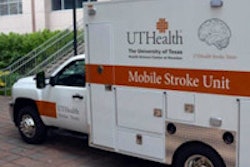The software applications, eXposure (Radimetrics, Bayer HealthCare) and VirtualDose (Virtual Phantoms), were used to compare organ-dose results for the adrenal glands, breasts, esophagus, heart, lungs, stomach, liver, spleen, and kidneys in 60 patients undergoing chest CT for lung nodule follow-up.
The researchers monitored scan parameters including kV, fixed mAs, scan length, rotation time, pitch, beam collimation, CT dose index volume (CTDIvol), and dose-length product (DLP). "We compared two such software and found considerable differences ... in estimated organ doses between the two software used in our study," Padole told AuntMinnie.com.
The differences increased when larger patients were imaged. Was measuring the patient a problem?
"Accurate determination of patient size is important for estimating organ doses as observed with radiation dose estimating software," the study team wrote.
"Our study alerts CT users about the variability in estimating organ doses with currently available organ-dose estimation software," Padole said.



















